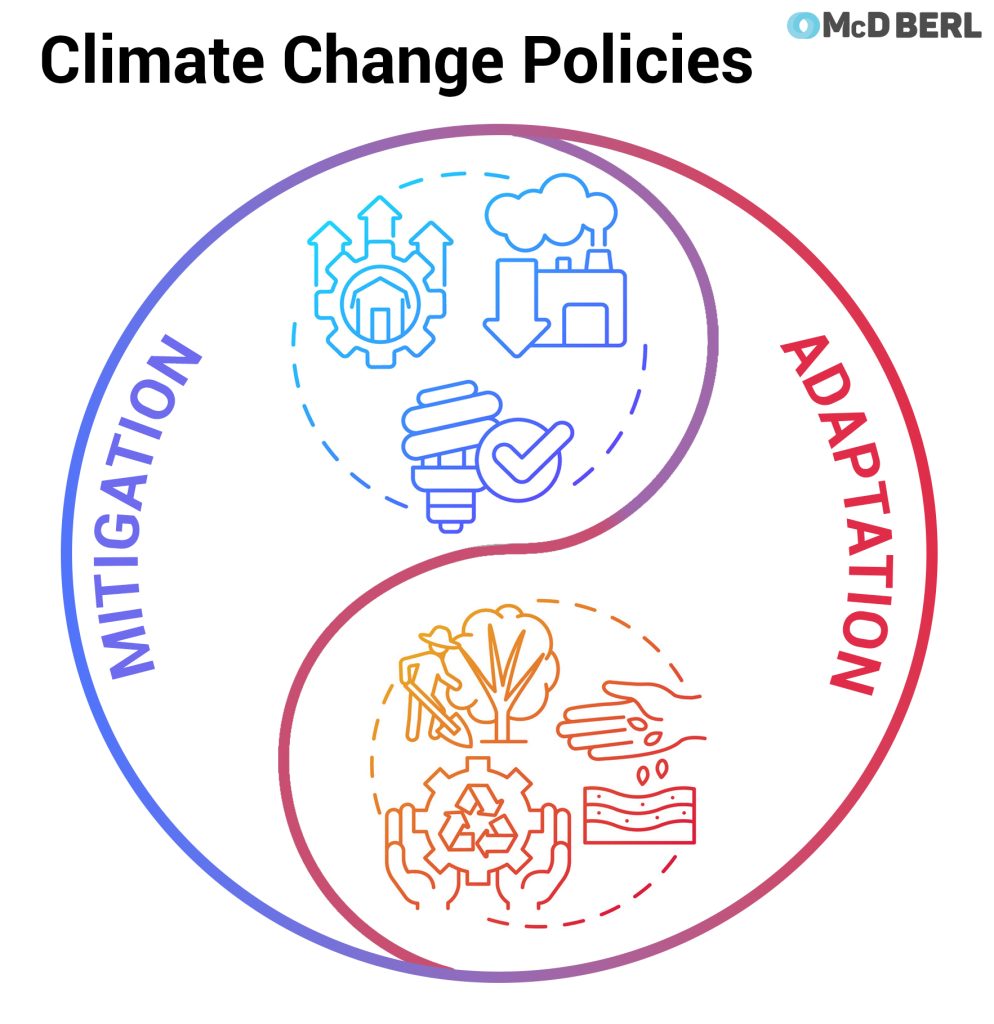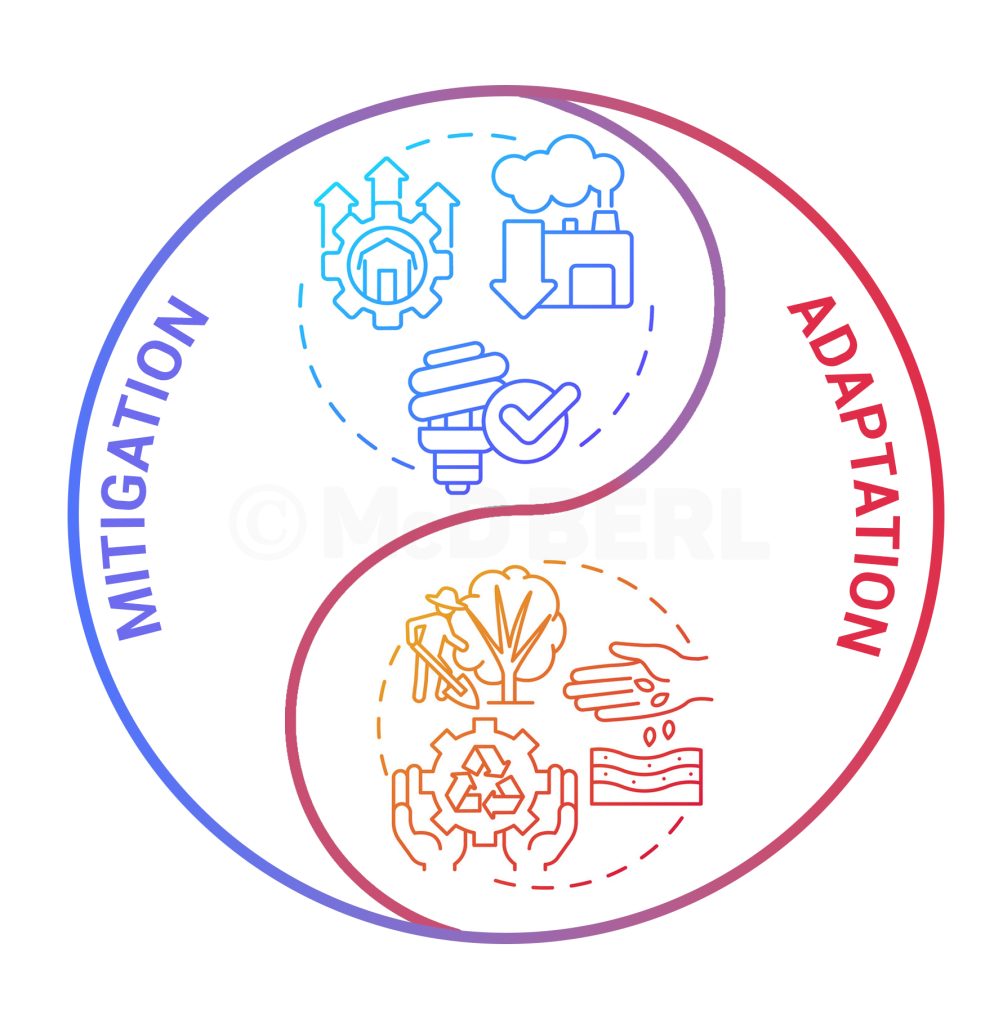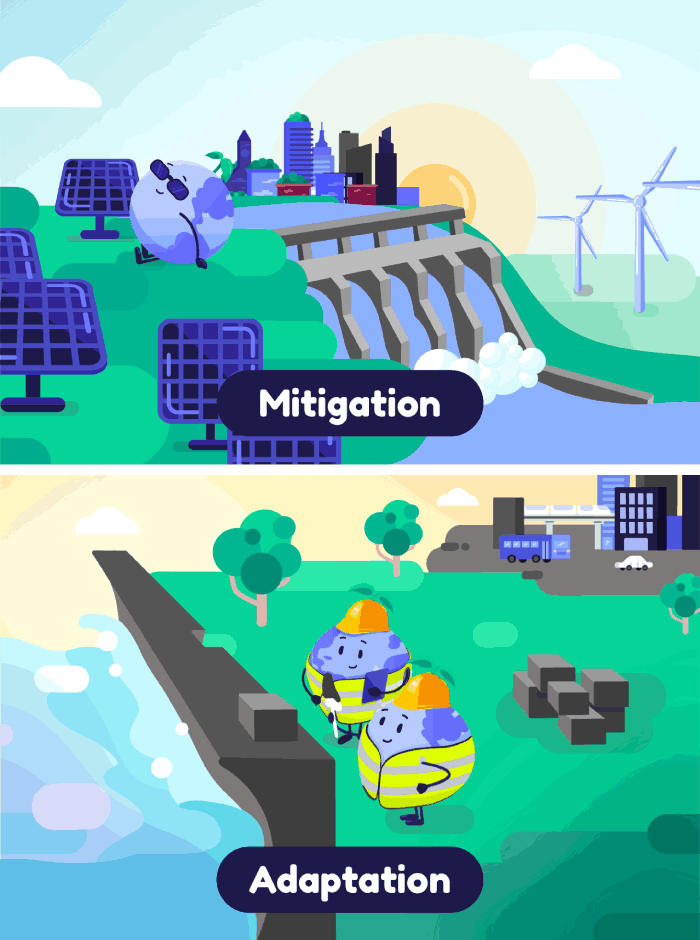Adaptation and Mitigation - Complementary Strategies to Tackle Climate Change

Climate change is an undeniable reality confronting every sector of society and the environment on a global scale. To address this multifaceted issue, we must embrace two distinct but interconnected strategies: adaptation and mitigation. Together, these approaches form a comprehensive response to the challenges posed by a changing climate, offering synergistic solutions that can help us transition towards a resilient and sustainable future.
The Yin and Yang of Climate Action

Like the complementary forces of yin and yang, adaptation and mitigation work best when they are in harmony. One cannot be fully effective without the other. Adaptation strategies allow us to cope with immediate and short-term climate impacts, making communities more resilient. At the same time, mitigation tackles the long-term changes that are necessitated by climate predictions, working to prevent or minimize future climate-related disasters.
Understanding Adaptation and Mitigation

Adaptation refers to the actions we take to adjust to the actual or expected future climate. It involves making changes in our processes, practices, and structures to reduce the damages caused by climate impacts. Adaptation policies tailored to the building sector are essential for mitigating risks, reducing vulnerabilities, and fostering resilience in the face of a changing climate.
Mitigation on the other hand, aim at the root causes of climate change by reducing emissions and increasing energy efficiency, transitioning to renewable energy sources, conserving forests, and promoting sustainable land use.
Existing Mitigation Policies:
1.Nationally Determined Contributions – India has updated its NDC’s in August 2022, which discloses information regarding how to reach the target and verify the process, so it stays on track. Some of the updated India’s NDC’s are
- Reducing the carbon intensity of the economy to 45% below the 2005 level
- Increasing non-fossil capacity in power generation to 500 GW
- Achieving 50% of its energy requirement from renewable energy sources by 2030
- Reducing emissions by 1 billion tons by 2030
2.Renewable Energy – India has set ambitious targets for expanding its renewable energy capacity, including solar and wind power. Initiatives like the Jawaharlal Nehru National Solar Mission and the National Wind-Solar Hybrid Policy aim to reduce carbon emissions.
3.The Perform, Achieve, and Trade (PAT) scheme – A regulatory instrument to reduce energy consumption in energy intensive industries, with an associated market-based mechanism to enhance the cost effectiveness through certification of excess energy saving (EScerts) which can be traded.
4.The Energy Storage Obligation (ESO) specifies that energy storage should be set at 1% in 2023-2024 and gradually rise to 4% by 2029-2030 of total energy consumed from solar and wind (Colthorpe, 2022).
5.Long-Term Low-Carbon Development Strategy India (2022) – document confirms India’s target to reach net zero by 2070 and outlines some specific actions to be undertaken in key sectors such as power, transport, and buildings (India’s Long-Term Low-Carbon Development Strategy | UNFCCC, n.d.).
6.Long-Term growth trajectory of Renewable Purchase Obligations (RPOs) – The Ministry of Power has issued renewable purchase obligations and energy storage obligations for a period of 2029-30. According to this order, the total prescribed RPO will progressively increase from 24.61 percent in 2022-23 to 43.33 percent by 2029-30 (Long Term Growth Trajectory of Renewable Purchase Obligations (RPOs) | Climate Policy Database, n.d.).
7.National Electricity Plan India (2022) – This plan highlights that India is planning to add considerable solar and wind capacity by 2031-32 of 333 GW and 134 GW, respectively. Coal will also continue to play a significant role in the country’s energy mix.
Existing Adaptation Policies:
- National Action Plan on Climate Change (NAPCC) – The National Action Plan on Climate Change in India was framed to address the challenges posed by climate change and to outline a comprehensive strategy for sustainable development. The plan was launched in June 2008 and served as a response to both the national and global implications of climate change. For India to reach Net Zero by 2070, the NAPCC outlines eight national missions that focus on sectors vulnerable to climate change:
- The National Solar Mission
- The National Mission for Enhanced Energy Efficiency
- The National Mission on Sustainable Habitat
- The National Water Mission
- The National Mission for Sustaining the Himalayan Eco-System.
- The National Mission for a Green India
- The National Mission for Sustainable Agriculture
The National Mission on Strategic Knowledge for Climate Change
2.Energy Conservation Building Code – The main objective is to establish minimum requirements for energy efficiency and the construction of buildings and their systems without compromising the comfort of the occupants. ECBC improves a structure’s resistance to the effects of climate change while simultaneously lowering its carbon footprint. (ECBC).
3.Eco – Niwas Samhita (ENS) – An energy conservation building code for residential buildings that promotes energy efficiency in design and construction.
4.Standard and labelling program – Requirement for labels affixed to products to provide consumers with an informed choice about the energy saving and consequent cost saving potential of the respective products.
Policies for both mitigating and adapting to climate change are crucial elements of a holistic solution to the current situation. We can design buildings and create ecosystems and communities that are more resilient to the effects of climate change by putting strong adaptation and mitigation policies into place. Equally, we can lessen the severity of future climate change by reducing greenhouse gas emissions and implementing ambitious initiatives.
We can protect our planet for present and future generations and ensure a resilient and sustainable future for everybody by cooperating to adopt adaptation and mitigation policies.




